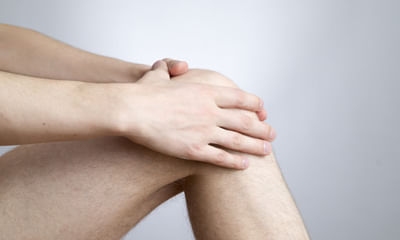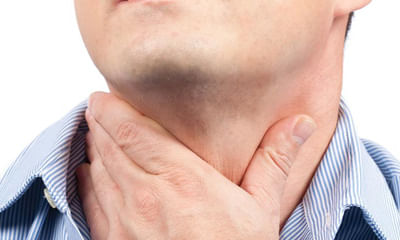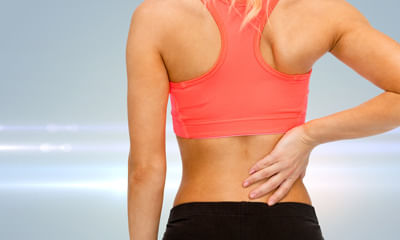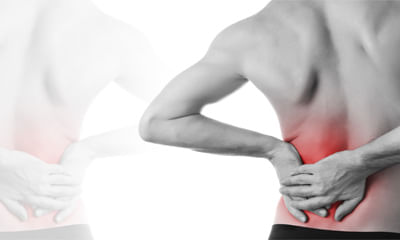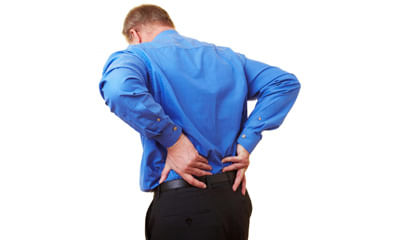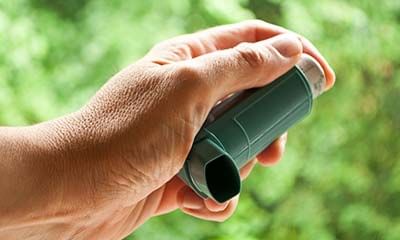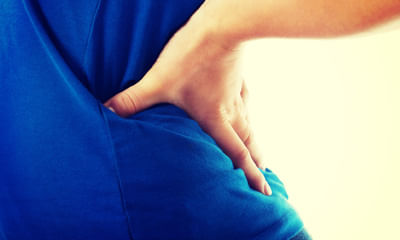Severe Degeneration Of The Spine
Sir, I have serious pain infrequent in my right shoulder since 10 years. Initial days I went to local doctor and they su ...
Ask Free Question
Based on the mri findings of your cervical spine, here are some observations and potential implications: mild lateral curvature of cervical spine with convexity of left side: this indicates a slight sideways curvature of the cervical spine, which may be contributing to your shoulder pain and other symptoms. Mild marginal osteophytes: osteophytes are bony growths that can develop along the edges of the vertebrae in response to degenerative changes in the spine. They can sometimes cause compression of nearby structures, leading to pain and other symptoms. Mild disc osteophyte complexes at c4-c5, c5-c6 levels: this refers to the presence of bone spurs and associated disc degeneration at specific levels of the cervical spine (cervical vertebrae 4-5 and 5-6). These changes may be contributing to compression of the thecal sac (the membrane that surrounds the spinal cord) and abutment of the spinal cord itself. Hydrosyringomyelia: this is a condition characterized by the presence of fluid-filled cavities (syrinx) within the spinal cord. In your case, it appears to be extending from the cervical to the dorsal (upper back) levels of the spinal cord. This can lead to symptoms such as pain, weakness, and sensory disturbances. Crowding at foramen magnum with mild tonsillar herniation: the foramen magnum is the opening at the base of the skull through which the spinal cord passes. Crowding at this location, along with tonsillar herniation (where the lower part of the cerebellum extends below the opening), can sometimes lead to compression of the spinal cord and related symptoms. Based on these findings, it's important to consult with a neurologist or spine specialist who can provide a comprehensive evaluation and recommend the most appropriate treatment options. Treatment may involve a combination of medications for pain management, physical therapy to improve strength and flexibility, and possibly surgical intervention depending on the severity of symptoms and underlying pathology. In terms of what you can do: follow the recommendations of your healthcare provider regarding pain management, activity modification, and any prescribed treatments. Consider seeking a second opinion from a spine specialist or neurosurgeon to ensure you have a comprehensive understanding of your condition and all available treatment options. Avoid activities that exacerbate your symptoms or put strain on your neck and spine. Maintain good posture and ergonomics to minimize stress on your cervical spine. Stay informed about your condition and ask questions during your medical appointments to ensure you understand your treatment plan and prognosis.
Dear doctors I hear crack/popping sound in my front neck and also back neck every time I make my neck/throat movement. W ...
Ask Free Question
If you're experiencing a crackling or popping sound in your neck when you move it, it could be due to several possible reasons: 1. Air bubbles: the sound could be caused by the release of air bubbles in the joints of the neck as you move. This is similar to the sound produced when you crack your knuckles. It is generally harmless and not a cause for concern. 2. Joint dysfunction: it's possible that the crackling sound is related to joint dysfunction, such as misalignment or degeneration of the cervical spine. This could be due to conditions like cervical osteoarthritis or cervical facet joint syndrome. If the cracking sound is accompanied by pain or restricted movement, it's advisable to consult a healthcare professional for an evaluation and appropriate management. 3. Muscle or ligament tension: tight muscles or ligaments in the neck can also cause cracking or popping sounds when they rub against each other during movement. This can occur due to poor posture, stress, or muscle imbalances. Stretching exercises, relaxation techniques, and postural correction may help alleviate these symptoms. If the cracking sound is not associated with pain, swelling, or other concerning symptoms, it is generally considered normal. However, it's always a good idea to consult a healthcare professional for a proper evaluation and diagnosis, especially if you're experiencing accompanying symptoms or if the sound is causing significant discomfort. The healthcare professional will be able to assess your specific situation, perform a physical examination, and may order additional tests if necessary. They can provide you with appropriate advice and treatment options based on the underlying cause of the crackling sound in your neck.
Do you treat and cure ankylosing spondylitis where current stage has degeneration in spine with dis herniation and muscl ...
Ask Free Question
Ankylosing spondylitis is a cause of back pain in adolescents and young adults. Ankylosing spondylitis is a form of chronic inflammation of the spine and the sacroiliac joints chronic inflammation in these areas causes pain and stiffness in and around the spine, including the neck, middle back, lower back, and buttocks. Over time, chronic inflammation of the spine (spondylitis) can lead to a complete cementing together (fusion) of the vertebrae, a process referred to as ankylosis. Ankylosis causes loss of mobility of the spine. Pt treatment deep breathing for lung expansion and stretching exercises to improve spine and joint mobility. Are also advised to sleep on a firm mattress and avoid the use of a pillow in order to prevent spine curvature. Aerobic exercise is generally encouraged as it promotes full expansion of the breathing muscles and opens the airways of the lungs. Home remidie physical therapy for ankylosing spondylitis includes instructions and exercises to maintain proper posture. This includes deep breathing for lung expansion and stretching exercises to improve spine and joint mobility. Since ankylosis of the spine tends to cause forward curvature (kyphosis), patients are instructed to maintain erect posture as much as possible and to perform back-extension exercises. Patients are also advised to sleep on a firm mattress and avoid the use of a pillow in order to prevent spine curvature. Ankylosing spondylitis can involve the areas where the ribs attach to the upper spine as well as the vertebral joints, thus limiting breathing capacity. Patients are instructed to maximally expand their chest frequently throughout each day to minimize this limitation. Physical therapists customize exercise programs for each individual. Swimming often can be a very beneficial form of exercise, as it avoids jarring impact of the spine. Ankylosing spondylitis need not limit an individual's involvement in athletics. People can participate in carefully chosen aerobic sports when their disease is inactive. Aerobic exercise is generally encouraged as it promotes full expansion of the breathing muscles and opens the airways of the lungs. Cigarette smoking is strongly discouraged in people with ankylosing spondylitis, as it can accelerate lung scarring and seriously aggravate breathing difficulties. Occasionally, those with severe lung disease related to ankylosing spondylitis may require oxygen supplementation and medications to improve breathing. People with ankylosing spondylitis may need to modify their activities of daily living and adjust features of the workplace. For example, workers can adjust chairs and desks for proper postures. Drivers can use wide rearview mirrors and prism glasses to compensate for the limited motion in the spine. You should check with your doctor before using compression socks for your swelling. These special socks should be properly fitted for you and your needs. Also, be sure to wear them during the day and remove them before you go to bed. Leg elevation if you stand a lot during the day, try propping your feet up or soaking them in water when you get home to help prevent swelling. Muscle relaxant: reduces muscle tension and helps relieve muscle pain and discomfort. Transcutaneous electrical nerve stimulation (also known as tens) is something which helps ease muscle pain and spasms. You can strengthen the muscles by doing tonificationie. Improving the tone of the muscles by adding either weight cuffs / sand bags which will help you to improve the strength of the muscle.
Hello doctor, from last 4 days I am facing extreme pain while sitting, standing or if I lie down to bed. I have red spot ...
Ask Free Question
I am sorry to hear about your concern but will be happy to assist you. Sitting causes your hip flexors to shorten, and your seated position can also hurt your back, particularly if you have bad posture or don't use an ergonomic chair. Also, poor posture while sitting can cause compression on the discs in your spine and can lead to premature degeneration, which results in chronic pain. Let's connect over a call so that we can discuss your concern in details and make a suitable treatment plan for you.
My wife who is 59 years old has undergone laminectomy in 2004 { l4/l5}. Now she has been diagnosed with disc compression ...
Ask Free Question
If the complaints are so severe as to undergo a surgery and the patient has been evaluated by a spine surgeon and he agrees that the surgery would help in resolving the symptoms, then it is obviously worth considering a surgery.
A client recently had her hip x-rayed and has come to me for massage her hip has locked out but we don’t seem to be able ...
Ask Free Question
It's an age factor actually. As the age gets higher the bone density in the body will get reduced. And the muscles also will get weakened. This may lead to degeneration of the disc. She can go for a strengthening of the abdominal group muscles. •standing hamstring stretch: place the heel of your injured leg on a stool about 15 inches high. Keep your knee straight. Lean forward, bending at the hips until you feel a mild stretch in the back of your thigh. Make sure you do not roll your shoulders and bend at the waist when doing this or you will stretch your lower back instead of your leg. Hold the stretch for 15 to 30 seconds. Repeat 3 times. •cat and camel: get down on your hands and knees. Let your stomach sag, allowing your back to curve downward. Hold this position for 5 seconds. Then arch your back and hold for 5 seconds. Do 3 sets of 10. •quadruped arm/leg raise: get down on your hands and knees. Tighten your abdominal muscles to stiffen your spine. While keeping your abdominals tight, raise one arm and the opposite leg away from you. Hold this position for 5 seconds. Lower your arm and leg slowly and alternate sides. Do this 10 times on each side.•pelvic tilt: lie on your back with your knees bent and your feet flat on the floor. Tighten your abdominal muscles and push your lower back into the floor. Hold this position for 5 seconds, then relax. Do 3 sets of 10. •partial curl: lie on your back with your knees bent and your feet flat on the floor. Tighten your stomach muscles. Tuck your chin to your chest. With your hands stretched out in front of you, curl your upper body forward until your shoulders clear the floor. Hold this position for 3 seconds. Don't hold your breath. It helps to breathe out as you lift your shoulders up. Relax. Repeat 10 times. Build to 3 sets of 10. To challenge yourself, clasp your hands behind your head and keep your elbows out to the side. •gluteal stretch: lying on your back with both knees bent, rest the ankle of one leg over the knee of your other leg. Grasp the thigh of the bottom leg and pull that knee toward your chest. You will feel a stretch along the buttocks and possibly along the outside of your hip on the top leg. Hold this for 15 to 30 seconds. Repeat 3 times. •extension exercise: lie face down on the floor for 5 minutes. If this hurts too much, lie face down with a pillow under your stomach. This should relieve your leg or back pain. When you can lie on your stomach for 5 minutes without a pillow, then you can continue with the rest of this exercise.
My mother is having severe pain behind the calf muscle. She's not able to walk and sleep. She has Parkinson's disease fo ...
Ask Free Question
sometimes this kind of pain can occure due to simple dehydration.water intake of 3 litre a day is must.if still this persist go for homeopathic medications if pain killlers arnt working.
I am 20 years male. I am suffering from a chronic back pain since 16 months. I went to the general doctor and orthopaedi ...
Ask Free Question
You should go for biopsy of that tumor to know it is cancerous or not. Forback pain and spinal cord issue I can help you with Homoeopathic treatment. I need more details. You can consult me through Lybrate
I am sever patient of asthma. Using Nirantar 400 inhaler & Dublin inhaler presently along with DOCOMAX XP BD. Earlier fo ...
Ask Free Question
Use LABA and LAMA combination by inhalation with spacer. As you are having COPD to be confirmed by PFT.
My grandmother is suffering from severe backache and leg pain R>L difficulty in standing, K/C/O: DM, HTN, HYPOTHYROID MR ...
Ask Free Question
Hi lets first understand surgery is not recommended in this age group .take conservative treatment only is the best option for you like physiotherapy along with electrotherapy techiniques which is medicinal and side effects free.

